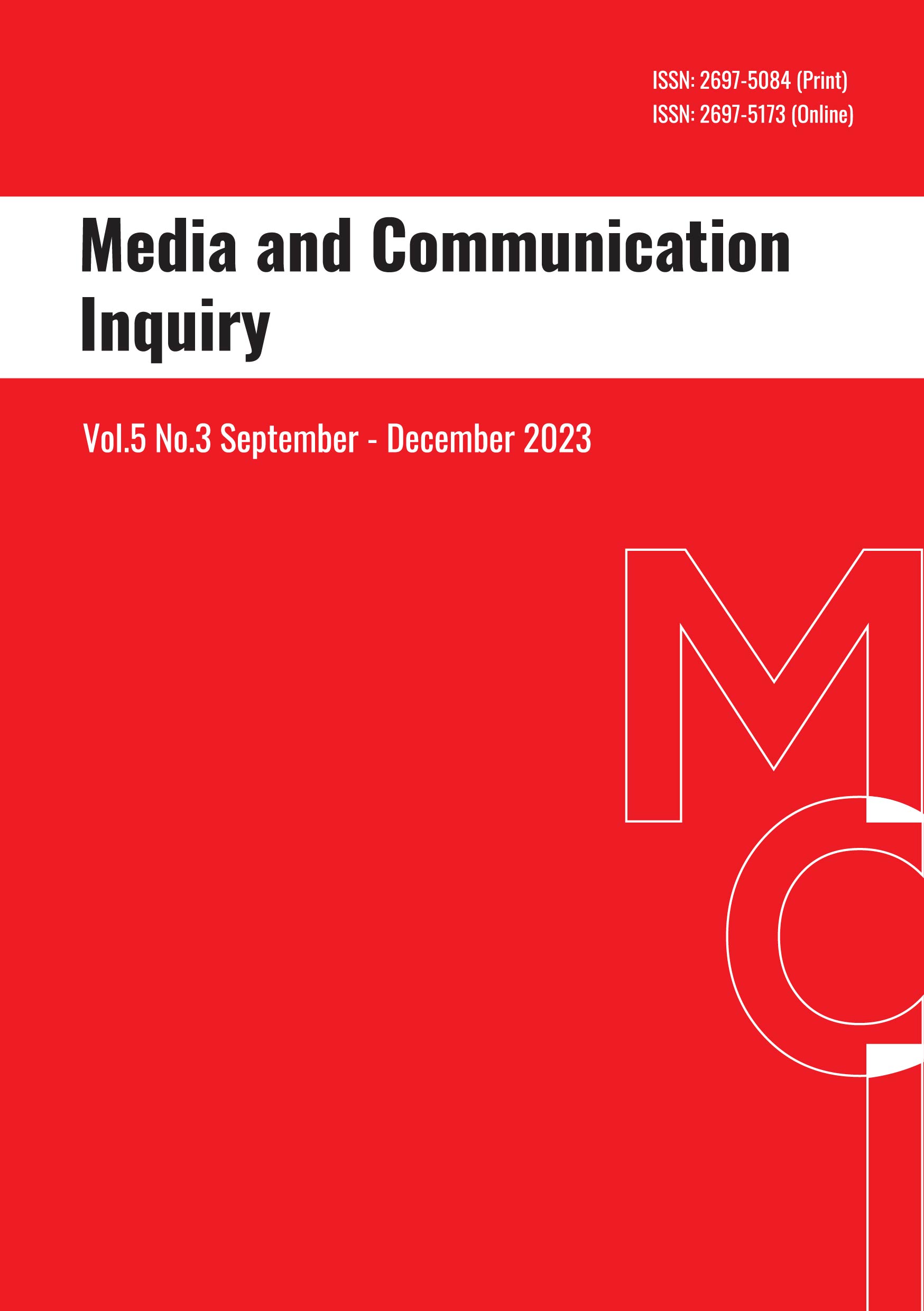Advertisement on YouTube: Attitudes and Avoidance Behaviors
Main Article Content
Abstract
The objectives of the research are to study consumers’ attitude toward advertising and advertising avoidance behavior on YouTube, to study the difference between their demographic profile and attitude toward advertising and advertising avoidance behavior on YouTube, and to study the relationship between such attitude and advertising avoidance behavior. The study was conducted using a survey quantitative research design. The population consists of 305 YouTube users, aged between 18 and 60 years, selected by volunteer sampling. Data, collected during 1-30 June 2021 by online questionnaire on social media, are analyzed using descriptive and inferential statistics. The finding shows that the samples’ attitude toward advertising on YouTube is at a moderate level, with the highest score found in in-feed video ads and lowest in non-skippable in-stream ads. The samples’ advertising avoidance behavior on YouTube is also at a moderate level, with the highest score found in non-skippable in-stream ads and lowest in in-feed video ads. The testing of the hypothesis reveals that the consumers’ demographic profile, i.e. sex, age and personal monthly income, significantly accounts for their attitude toward advertising and advertising avoidance behavior on YouTube. In addition, it is found that their attitude toward advertising on YouTube is negatively related to their advertising avoidance behavior on YouTube in a significant manner or those with a positive attitude toward advertising on YouTube show a lower rate of advertising avoidance behavior than those with a negative attitude toward it. The form of advertising on YouTube with the highest relationship is non-skippable in-stream ads, followed by skippable in-stream, in-feed video, and masthead ads respectively.
Article Details

This work is licensed under a Creative Commons Attribution-NonCommercial-NoDerivatives 4.0 International License.
ลิขสิทธิ์บทความ
References
ภาษาไทย
กอบกาญจน์ เหรียญทอง. (2556). ปัจจัยที่มีผลต่อพฤติกรรมการท่องเที่ยวตลาดน้ำอัมพวาจังหวัดสมุทรสงคราม. (สารนิพนธ์). มหาวิทยาลัยสยาม.
กัลยา วานิชย์บัญชา และ รัฐพงศ์ จั่วแจ่มใส. (2560). การศึกษาทัศนคติ พฤติกรรม และปัจจัยที่มีผลต่อแนวโน้มของผู้บริโภคสื่อโฆษณาในสตรีมบนกลุ่มวีดีโอออนไลน์. https://so02.tcithaijo.org/index.php/apheitvu/article/view/95260/74438
ชนม์ธนัทกรณ์ อยู่ชยันตี และ ม.ล.วิฏาธร จิรประวัติ. (2553). ทัศนคติต่อโฆษณา และพฤติกรรมการหลีกเลี่ยงโฆษณาในโรงภาพยนตร์.
https://so03.tcithaijo.org/index.php/jprad/article/download/134373/100535/355760
ญาณกร วิภูสมิทธ์. (2558). การเปิดรับ และพฤติกรรมการตอบสนองต่อโฆษณาทางยูทูบ (YouTube) ของผู้บริโภค. (การค้นคว้าอิสระปริญญามหาบัณฑิต). มหาวิทยาลัยธรรมศาสตร์,
ณัฐพล พฤกษวันประสุต. (2561) ปัจจัยที่ส่งผลต่อการตัดสินใจปิดกั้นโฆษณาดิจิทัลในประเทศไทย กรณีศึกษายูทูป. (การค้นคว้าอิสระปริญญามหาบัณฑิต). มหาวิทยาลัยธรรมศาสตร์,
นิฤมล หิรัญวิจิตรภรณ์. (2558). ทัศนคติ การรู้เท่าทันสื่อ และพฤติกรรมการหลีกเลี่ยงโฆษณาออนไลน์. (วิทยานิพนธ์ปริญญามหาบัณฑิต).
สถาบันบัณฑิตพัฒนบริหารศาสตร์.
ภณภาส เดชหอมชื่น. (2562). พฤติกรรมการหลีกเลี่ยงสื่อโฆษณาบนแอปพลิเคชั่นเฟซบุ๊กของผู้บริโภคกลุ่มมิลเลนเนียลในประเทศไทย. (การค้นคว้าอิสระปริญญามหาบัณฑิต). มหาวิทยาลัยธรรมศาสตร์.
วชิรวัชร งามละม่อม. (2558). แนวคิดและทฤษฎีที่เกี่ยวกับลักษณะทางประชากรศาสตร์. http://learningofpublic.blogspot.com
วันวิสา ยังโหมด. (ม.ป.ป.). การศึกษาการเปิดรับรูปแบบสื่อโฆษณาและพฤติกรรมการหลีกเลี่ยงสื่อโฆษณาบนเว็บไซด์ยูทูบ YouTube ของประชาชนในเขตกรุงเทพมหานคร.https://mmm.ru.ac.th/MMM/IS/mlw11/sec1/6014963018.pdf
ศิริวรรณ เสรีรัตน์. (2538). พฤติกรรมผู้บริโภค. กรุงเทพฯ. ไทยวัฒนาพานิช.
ศิวพร ลีลาวัฒนสุข. (2553). การโฆษณาด้วยแบนเนอร์บนเว็บไซต์. วารสารนักบริหาร, 30(3), 117-121.
เสรี วงษ์มณฑา. (2540). กว่าจะเห็นเป็นโฆษณา. สำนักพิมพ์ดอกหญ้า.
อริสา สำรอง. (2549). จิตวิทยาการตลาดและผู้บริโภค. สำนักพิมพ์มหาวิทยาลัยรามคำแหง.
อาสภา รัตนมุ่งเมฆาและคณะ. (2559). ทัศนคติ พฤติกรรมการเปิดรับและความพึงพอใจของผู้ชมละครซีรีส์ช่อง GMM25 ผ่านสื่อยูทูบ. (วิทยานิพนธ์ปริญญามหาบัณฑิต). สถาบันบัณฑิตพัฒนบริหารศาสตร์.
ภาษาอังกฤษ
Business of Apps. (n.d.). YouTube Revenue and Usage Statistics (2023). https://www.businessofapps.com/data/YouTube-statistics/
Federico de Gregorio, Jong-Hyuok Jung, & Yongjung Sung. (2017). Advertising Avoidance: A Consumer Socialization Perspective. Online Journal of Communication and Media Technologies.
Fishbein, M., & Ajzen, I. (1975). Belief, Attitude, Intention and Behavior: An Introduction to Theory and Research.
Henilia Yulita, Pinckey TRIPUTRA, Udi Rusadi, & Titi WIDANIGSIH. (2022). Ads Avoidance And Attitude Towards Online Advertising Among Net-Generation In Jakarta. International Journal of Environmental Sustainability and Social Science.
Hunt, Todd, and Ruben, Brent D, (1993). Mass Communication: Producer and Consumers. New York: Harper College Publishers.
Louise Kelly; Gayle Kerr; and Judy Drennan. (2010). Avoidance of Advertising in Social Networking Sites. The Teenage Perspective Journal of Interactive Advertising.
Lutz, R. (1991). The Role of Attitude Theory in Marketing. In H. A. Kassarjian, Perspectivesin Consumer Behaviour. New Jersey: Prentice Hall.
McQuail, D. (2000). McQuail’s mass communication theory 4 ed. London: Sage.
Speck, P. S., & Elliott, M. T. (1997). Predictors of advertising avoidance in print and broadcast media. Journal of Advertising.
Statista. (n.d.). Ad blocking user penetration rate in the United States from 2014 to 2021.https://www.statista.com/statistics/804008/ad-blocking-reach-usage-us/
Statista. (n.d.). Number of adblock users worldwide from 2013 to 2019. https://www.statista.com/statistics/435252/adblock-users-worldwide/
Statista. (n.d.). Number of social media users worldwide from 2017 to 2027. https://www.statista.com/statistics/278414/number-of-worldwide-social-network-users/

